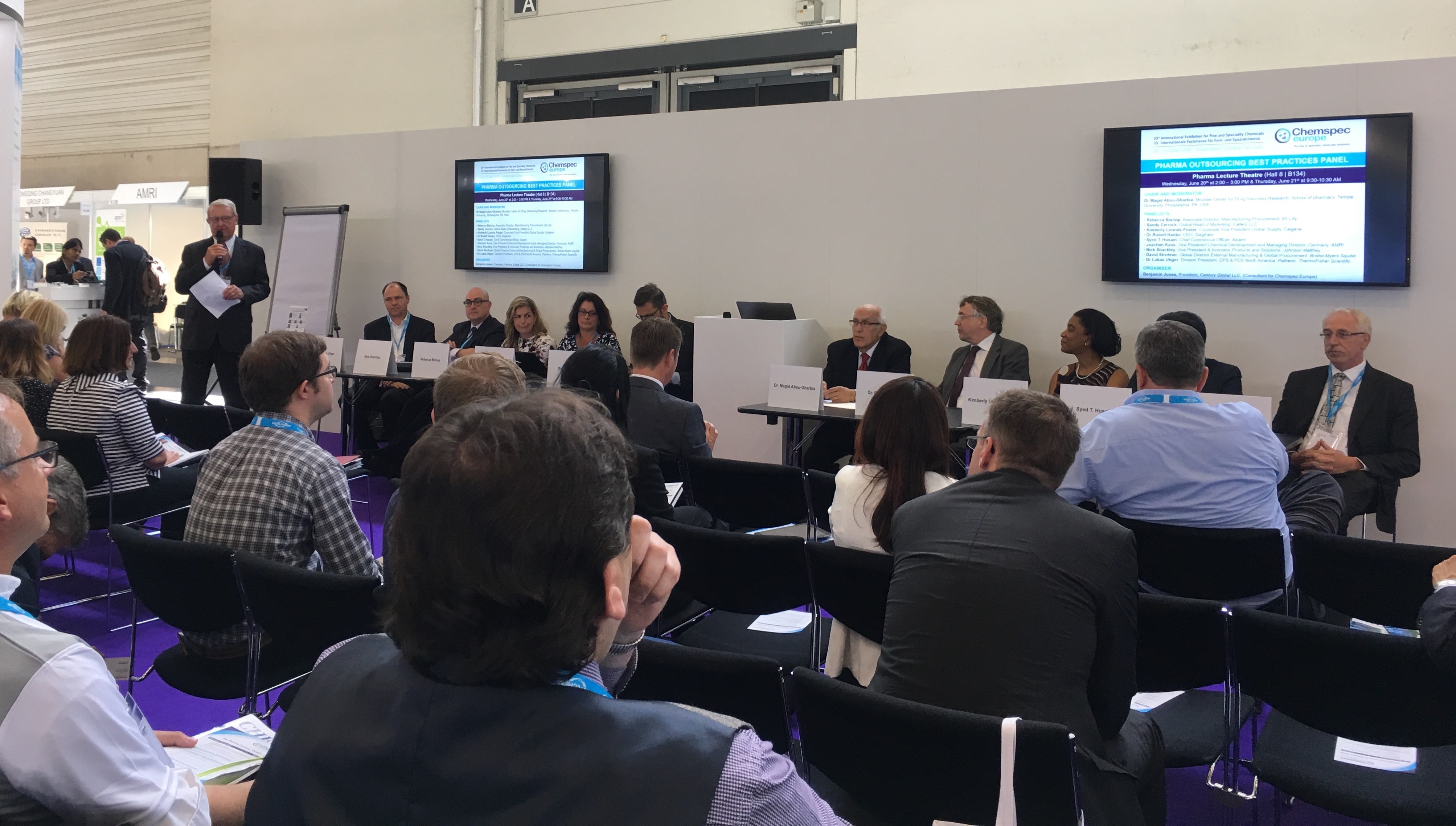
Chemspec highlight: Pharma outsourcing – best practices
Submitted by:
Sara Waddington
“Fail early and fail cheap” – this was the key message from Dr Magid Abou-Gharbia of the Moulder Center for Drug Discovery Research at Temple University’s School of Pharmacy in Philadelphia, US.
The landscape is changing; small molecules currently represent around 75% of existing drugs, but companies are moving towards a 50/50 ratio of small to large molecules. In the last 80 years, the US Food and Drug Administration (FDA) has approved 1,607 drugs, comprising 246 biological drugs and 1,361 small molecule drugs, but there remain at least 5,000 drugable ‘targets’. Because it costs around US$2 billion to find a new drug, with the cost increasing in the late stages, it’s more financially savvy to fail early.
Drug discovery is “all about finding the right key for the lock” and personalised medicine is one such key, Abou-Gharbia says. Not all patients respond to drugs – sometimes only 38%, such as for depression, or 60% for asthma, 25% for cancer – but knowing the DNA means you can make a better drug. Personalised medicine increases the survival rate.
Gene therapy will provide the solution but it gained a bad reputation when Jesse Geisinger, a volunteer suffering from the rare metabolic disorder ornithine transcarbamylase (OTC) deficiency, died. The first death directly related to gene therapy, it “set back the therapy 30 years”, says Abou-Gharbia, but the FDA approved the first drug last year and has since approved more.
Nevertheless, the cost is huge, even if it provides a 100% cure. Gene bioengineering, such as CRISPR, which cuts out the ‘bad’ gene and inserts a ‘good’ one, offers hope, but there have been no human trials yet.
What makes a good CMO?
After Abou-Gharbia’s introduction, attention turned towards the question of what makes a ‘good’ contract manufacturing organisation (CMO). An impressive line up of pharma experts provided insights. “In a US$50 billion industry, speed is getting more critical. Good technical support, efficiency and a good chain supply is a must,” said Dr Lukas Utiger, division president, DPS & PDS North America, Patheon, ThermoFisher Scientific. Kimberly Lounds Foster, corporate vice president of global supply at Celgene, agreed, adding that efficient use of capital and sensible partnerships drive sustainability.
An important question is what the customer is looking to outsource, said Nick Shackley, vice president and innovator products and solutions at Johnson Matthey. Small companies have no capabilities, so technology plays an important part.
Furthermore, it is better to find a CMO specialised in the technology you’re looking for; ‘one stop shops’ do not provide a solution. Dr Rudolf Henko, CEO of Siegfried, said: “A one stop shop is a synonym for failure, for not knowing anything. You cannot be a master of everything – you have to strike a balance between competency and capturing everything.” Syed T Husain, chief commercial officer at Alcami, agreed: “An integrated, focused offering has been proven to be successful, not multiple business units.”
Five years from now, what will the CMO market look like? David Strohner, global director of external manufacturing and late development global procurement at Bristol-Myers Squibb, said the market today is highly fragmented and capacity is underused.
Utiger said that consolidation in the market will continue and around five large companies would comprise 80% of the market. But this consolidation will only occur in ‘mature’ therapies, Foster added. “The role of externalisation changes depending on small or large molecules and organisations good at clinical might not be good at something else,” she said.
Husain suggested companies take a ‘scaleability’ approach; a “me too” space does not add value to the industry, CMOs should scale up or branch out only when it is required. Henko concurred, adding that size is not the answer, that companies should try to reach “critical size” where they are effective and at the front of new technologies.
Finally, Rebecca Bishop, associate director of manufacturing procurement at Eli Lilly, said that the ‘Made in China’ initiative will increase CMOs in the country and that large CMOs around the globe will continue to grow, but Dr Joachim Kaus, VP chemical development and managing director at AMRI in Germany, said that the current trend towards ‘reshoring’ would continue, as customers withdraw from China to ensure a strong and stable supply chain.
Outsourcing risk
What about risk management? Is it possible to outsource risk entirely to a CMO? Not entirely, the experts concluded. While some experts, such as Strohner, said that trust in a CMO was key to mitigate risks, others suggested that drug development cannot be entirely risk free. “Two out of three active pharmaceutical ingredients (APIs) violate Lipinski’s ‘rule of five’,” said Henko. “It’s a fine art game getting it right – R&D efficiency is key and it is a big risk if not done properly.”
Foster added that, while cell therapy innovators are moving at the speed of light to get technology approved and to market, they are not focusing on the ‘eco-system’. This is where the risk comes in. Shackley concluded that we need to help small biotechs with a risk strategy but the question is: how best can we do this?
Chemspec Europe was held in Cologne, Germany on 20-21 June.
